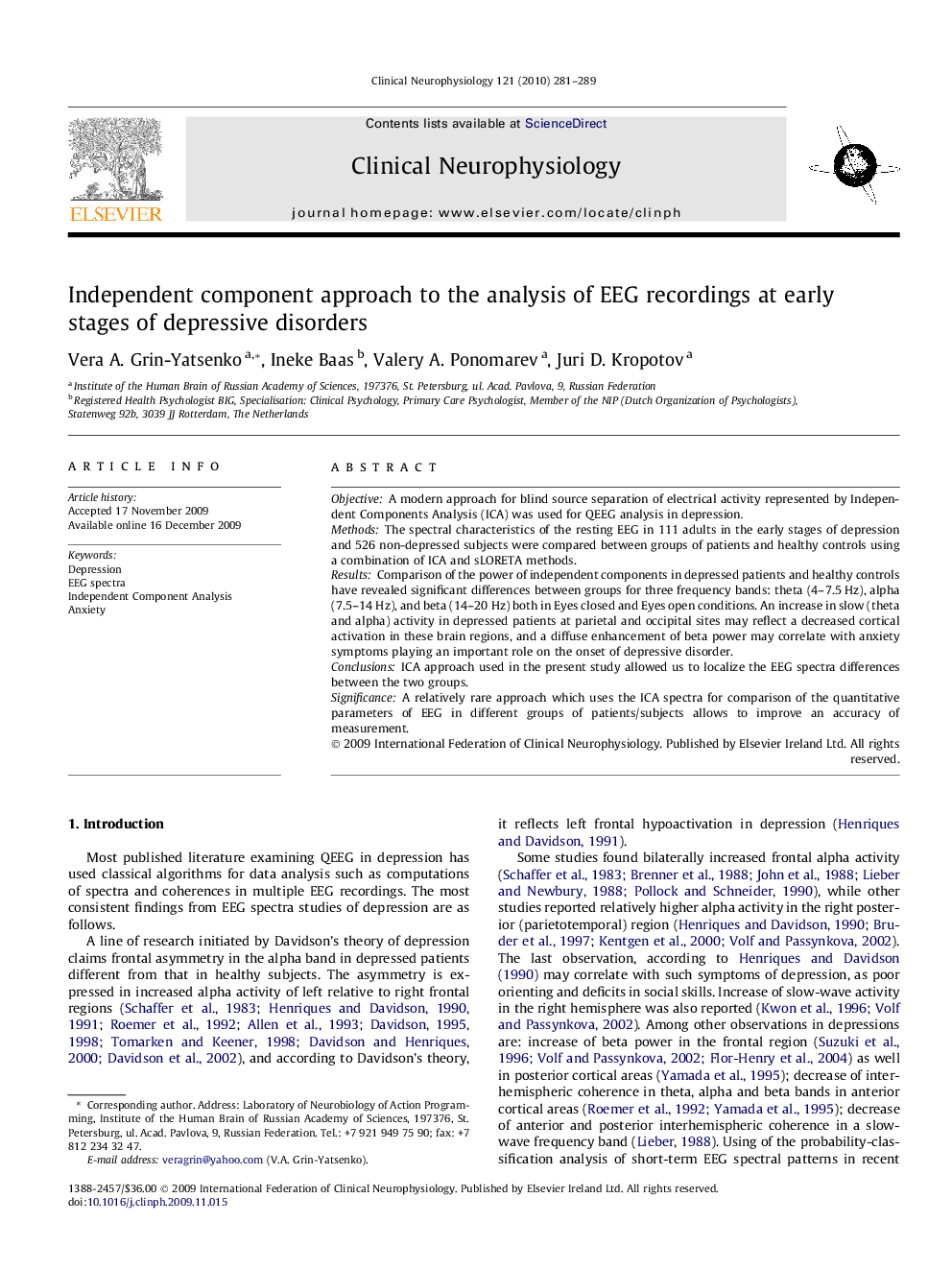| Article ID | Journal | Published Year | Pages | File Type |
|---|---|---|---|---|
| 3045142 | Clinical Neurophysiology | 2010 | 9 Pages |
ObjectiveA modern approach for blind source separation of electrical activity represented by Independent Components Analysis (ICA) was used for QEEG analysis in depression.MethodsThe spectral characteristics of the resting EEG in 111 adults in the early stages of depression and 526 non-depressed subjects were compared between groups of patients and healthy controls using a combination of ICA and sLORETA methods.ResultsComparison of the power of independent components in depressed patients and healthy controls have revealed significant differences between groups for three frequency bands: theta (4–7.5 Hz), alpha (7.5–14 Hz), and beta (14–20 Hz) both in Eyes closed and Eyes open conditions. An increase in slow (theta and alpha) activity in depressed patients at parietal and occipital sites may reflect a decreased cortical activation in these brain regions, and a diffuse enhancement of beta power may correlate with anxiety symptoms playing an important role on the onset of depressive disorder.ConclusionsICA approach used in the present study allowed us to localize the EEG spectra differences between the two groups.SignificanceA relatively rare approach which uses the ICA spectra for comparison of the quantitative parameters of EEG in different groups of patients/subjects allows to improve an accuracy of measurement.
